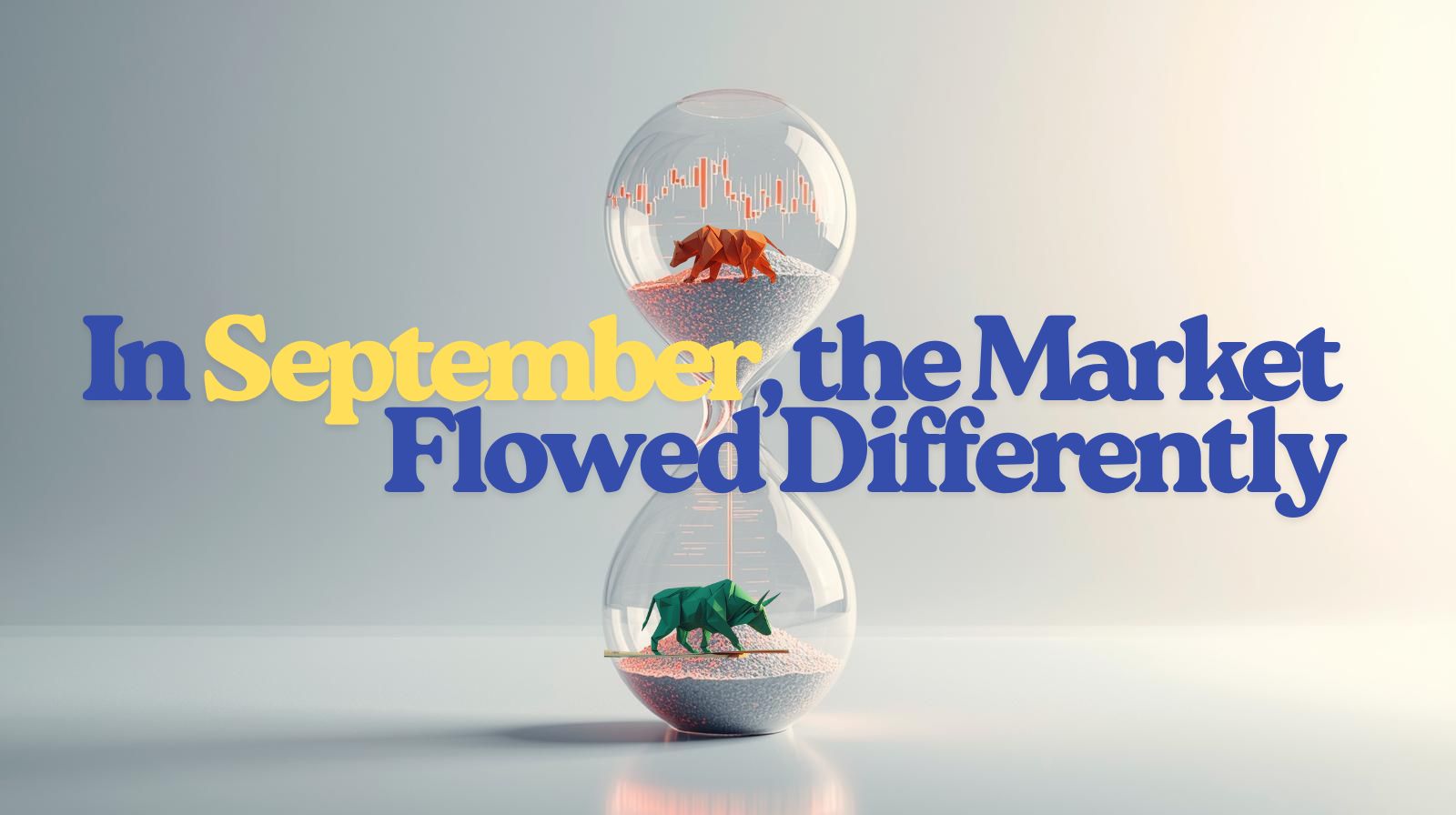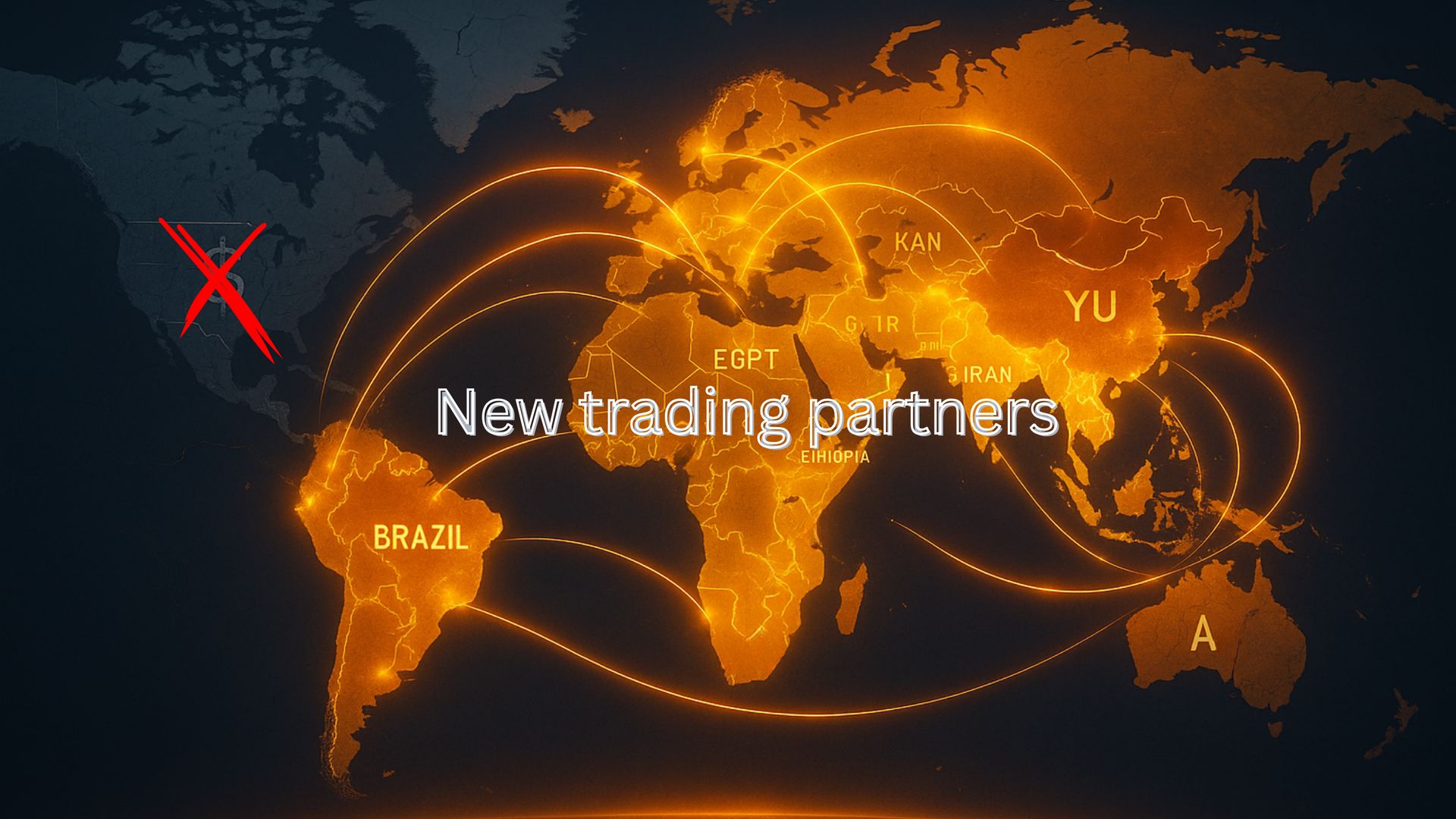- The Bread Bin
- Posts
- September 2025 Market Review: Calm Before the Next Big Move
September 2025 Market Review: Calm Before the Next Big Move
September brought a rare slowdown across global markets, Europe steadied, the U.S. cut rates, Africa kept building quietly, and BRICS nations started rewriting the rules.

If the global economy were a giant orchestra, September was the moment the conductor lowered the baton. The chaos softened, the tempo eased, and for the first time in months, you could actually hear the instruments.
Interest rates (the world’s financial volume knob) stopped rising. Prices in shops and supermarkets cooled. And though investors stopped panicking, few were dancing just yet. Everywhere from London to Lagos, people were watching to see whether this calm was a real pause or just the eye of the storm.
Why it matters
After months of financial drama, September offered something rare: breathing space. Inflation, which simply means the speed at which prices rise, slowed in most major economies. Central banks, (the teams in charge of setting borrowing costs) mostly held steady instead of pulling their usual levers.
However this stillness can be misleading. Like a quiet street after rainfall, puddles remain and anyone rushing out too early might slip. Markets paused, but nerves didn’t vanish. Investors were waiting for the next clear sign of direction.
Europe: Treading Water, Not Sinking
Across Europe, the numbers finally stopped flashing red. Germany’s factories nudged upward while France slowed down. Inflation across the euro area was 2.2 % year on year in September, slightly above August’s 2.0 %.
The European Central Bank decided not to change interest rates which was a cautious move to avoid rocking the boat. Over in the UK, inflation hovered around 3.8 %, and the Bank of England resisted cutting rates too soon. It’s like baking a cake, if you open the oven too early the middle collapses.

Europe’s recovery is rising slowly one careful move at a time.
The Americas: Testing the Brakes
In the United States, the Federal Reserve (America’s central bank) lowered borrowing costs for the first time in nearly two years by 0.25 %, bringing it to a range of 4.00 % - 4.25 %
It hoped to give businesses and homeowners a little breathing room after months of tight budgets.
Markets cheered briefly, with major U.S. indexes rose about 3.5 % but shoppers tightened their belts, and household debt crept higher. In Canada, the story was similar: inflation cooled, but not enough to celebrate.
Further south, Brazil and Mexico drew cautious interest from investors looking for steadier returns. Latin America proved again that when the big economies sneeze, smaller ones don’t always catch the cold sometimes they sell the tissues.
Africa: Quiet Builders
Africa didn’t make the headlines in September, but that doesn’t mean nothing was happening. Progress moved quietly, like the steady hum of work before sunrise.
Investors sent a small yet meaningful stream of money part of the $26 billion in global emerging market inflows tracked by the Institute of International Finance, with around $2.6 billion directed to Africa and the Middle East.
From Nairobi’s expanding tech hubs to Ghana’s housing projects, local businesses kept moving forward. It’s the rehearsal before the main act, this appears to be small baby steps before setting up for something bigger.

Africa’s growth starts quietly. Progress before the spotlight.
BRICS & Beyond: Rewriting the Rules
The BRICS nations (Brazil, Russia, India, China, and South Africa +++) want to trade more with each other and rely less on Western systems. September showed both progress and pressure.
China saw investors pull funds out of its stock markets, while India faced new U.S. tariffs that could pinch exports. Yet Brazil and South Africa remained magnets for long term investors, thanks to stable currencies and commodity demand.
BRICS nations are slowly sketching a new financial map, one that doesn’t depend entirely on Wall Street or London.

BRICS countries are setting up their own table choosing who they trade with and on what terms.
Investor Rationale
Calm periods reveal which companies quietly keep earning while others make noise. Therefore simple businesses with real profits matter more than market trends.
Always keep an eye on daily life activities regardless of what is happening around the world. Ask yourself, what are people buying, building, or talking about, hints at future winners.
Evidence & metrics
America gave borrowers a tiny bit of breathing room. The U.S. Federal Reserve trimmed interest rates by a quarter of a percent on 17 September, setting its main rate between 4.00 % and 4.25 %.
U.S. markets perked up. The big stock index, the S&P 500, climbed about 3½ % for the month and investors liked the rate cut.
Europe’s price rises cooled. Inflation across the euro area came in at 2.2 %, slightly higher than August but far calmer than last year’s spikes.
Britain’s costs stayed sticky. The most recent figure for August showed prices still running 3.8 % higher than a year ago.
Money kept trickling into developing markets. Investors sent roughly $26 billion to emerging economies in September, the smallest flow since May. Most of it went into government bonds, including about $50 billion of new debt issues led by Mexico, while around $2½ billion headed to Africa and the Middle East.
Risks & Counterpoints
Prices could start climbing again. If central banks cut rates too soon, people might start spending more, which can push prices right back up.
Governments are already stretched. Many countries owe a lot of money, so if something goes wrong, there isn’t much spare cash to fix it.
Politics can change everything overnight. Tensions between the U.S., China, and India are still simmering and a single headline could send markets wobbling again.
What a smart investor would do next
Don’t mistake quiet for safety. Just because markets have calmed down doesn’t mean the storm’s over. Keep your eyes open, big moves often start when everyone else has stopped paying attention.
Keep a little cash ready. If prices dip, you’ll be glad you have money on hand to grab good companies while they’re cheaper.
Stick with what you understand. You don’t need to chase headlines or fancy trends. The best investments are usually the ones you actually get, companies that make things people use every day and know how to earn steady profits.
Already subscribed, then you don’t have to do anything except enjoy our great content.
If you haven’t subscribed yet and want to cut through the noise? Subscribe for monthly plain English breakdowns that help everyday people see the bigger picture. Sign up for the free newsletter today.
Quick favour - what part of today’s post stuck with you? The charts, the story, or the takeaway? If you think a mate would get something out of it too, hit the share button at the top of the page and pass it on. We’re trying to give as many people as possible, the chance to make their money work harder.
⚠️ Disclaimer:
This is for educational purposes only, and is not financial advice. Always do your own research before making investment decisions.